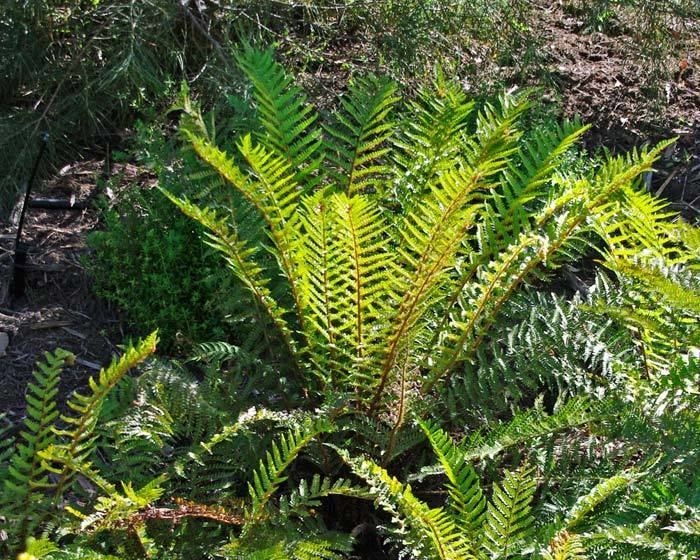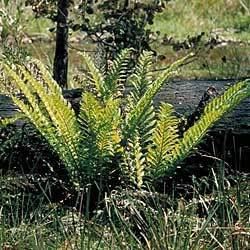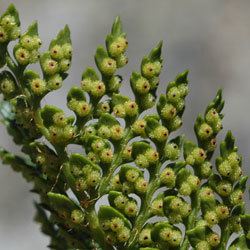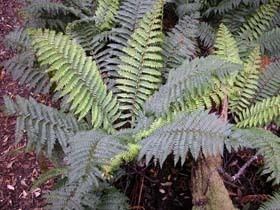Higher classification Polystichum | Division Pteridophyta Scientific name Polystichum proliferum Rank Species | |
 | ||
Similar Polystichum, Polystichum setiferum, Polystichum tsus‑simense, Polystichum aculeatum, Blechnum nudum | ||
Polystichum proliferum
Polystichum proliferum, commonly known as mother shield fern is an Australian endemic fern. The genus name Polystichum is derived from Greek poly - many, and stichos - rows referring to the many rows of sori. The species name is derived from Latin, Proli – offspring and fer - bearing referring to the proliferous buds, a prominent feature of the species.
Contents

Description

Polystichum proliferum is a terrestrial fern that can grow to 130cm in height. The rhizome and frond bases are covered in persistent scales which are glossy brown with pale edges. Sori (spore clusters) occur in rows on either side of the midrib and are covered with by a large umbrella-like indusium (protective covering) hence the common name “mother shield fern”.
Habitat and Distribution

Polystichum proliferum occurs on the tablelands and ranges of New South Wales, Victoria, Australian Capital Territory and Tasmania. Polystichum proliferum will occur in alpine regions amongst boulders and at lower altitudes in wet forests. The species typically favours gullies and creeks as well as the cooler and moister, southern and eastern aspects. Polystichum proliferum will however, occur in coastal scrub and dry schelorphyll due to its’ hardy characteristics such as the ability to tolerate salt-laden winds and poor soil quality. Polystichum proliferum is often associated with Dicksonia antarctica gullies, occurring higher up the gullies than Dicksonia antarctica and further away from the watercourse. The close association and similar appearance between the two species has often led novice plant to collectors to misidentify Polystichum proliferum as Dicksonia antactica.
Reproduction

Polystichum proliferum will propogate vegetatively via proliferous buds or sexually through spores. Vegetative reproduction occurs when bulbils develop at end of the larger fronds grows into small plant. As the weight of the bulbil increases, the frond sags until the bulbil can take root in the soil underneath. This characteristic allows Polystichum proliferum to colonise large areas vegetatively and is a desirable trait for those who cultivate the species in home gardens.

